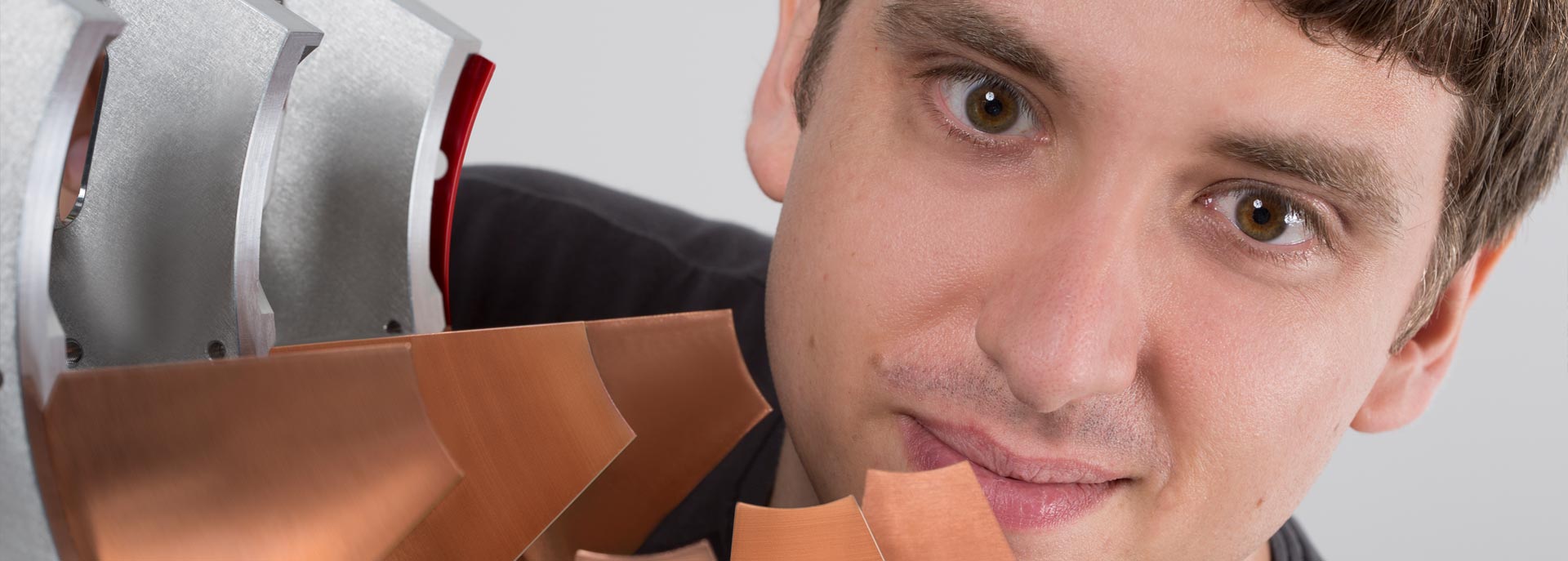Tetraquarks in the sights
The SPECF (Spectroscopy and Flavour) section
Mesons are short-lived particles consisting of a quark and an antiquark. In nature, they are created for example when cosmic radiation hits the Earth’s atmosphere. In the laboratory, mesons can be specifically generated in accelerator experiments. Because they are held together mainly by the strong interaction, their investigation provides detailed insights into this fundamental force of nature. In recent years, evidence has been growing that there are not only conventional mesons but also novel particles with an exotic quark content. At the Helmholtz Institute Mainz, the SPECF (Spectroscopy and Flavour) section investigates the mesons using the methods of spectroscopy: With the help of accelerators, the scientists generate excited states of the particles in order to analyze them accurately with detectors. The focus of the activities is on future experiments at the PANDA detector, which is being realized at the new FAIR accelerator complex at the GSI Helmholtzzentrum für Schwerionenforschung in Darmstadt.
Among other things, the researchers are interested in the charmonium—a bound state of a charm quark and antiquark. It has about three times the mass of the hydrogen atom, but is extremely short-lived and decays immediately after production. Similar to how the electron in a hydrogen atom can be excited to different energy levels, excited states of the two binding partners quark and antiquark also exist in the charmonium. These states can be generated in accelerators and are considered as independent particles.
Particularly interesting are states above a certain energy threshold: Beyond this “open-charm” threshold, massive particles are generated, which then decay into other mesons, consisting of a heavy charm quark and a light up or down quark. For some time now, researchers have been finding ever more states above the open-charm threshold. The remarkable thing about these new particles is that, for the most part, they do not fit at all to the predictions of the established theoretical models. There are overwhelming indications that some of the particles must be exotic states of four quarks, so-called tetraquarks, consisting of two quarks and two antiquarks.
The physicists of the SPECF section therefore pursue an ambitious goal: With their experiments, they aim to achieve a quantitative understanding of the quark composition and the decay properties of such tetraquark states. These insights should help to provide a quantitative description of the quark interaction at low energies based on quantum chromodynamics (QCD). This goal is challenging because the quarks in the particles are relatively far apart, making precise calculation difficult. Here, the accurate analysis of high-energy charmonium states and of tetraquarks promises valuable indications for the further development of the theory.
So far, the section is participating in the experiments at BESIII in Beijing, where several exotic tetraquark states have been found. In addition, there are already hints that some of these states can decay into others. However, a final theoretical interpretation on the basis of the existing measurement data is not yet possible. The PANDA detector at FAIR, which the HIM researchers are currently helping to set up and which is due to start operating around the year 2025, is intended to provide clear information on the structure of the exotic tetraquark states. The FAIR accelerator complex, which is currently under construction, will be able to generate tetraquarks and other exotic particle states much more effectively than previous facilities. PANDA will then analyze these states precisely—in the hope that they will reveal new, as yet undiscovered particles.
FAIR will generate fast antiprotons and shoot them at a hydrogen target. In the process, protons and antiprotons annihilate, thereby forming exotic particles, such as tetraquarks in very rare cases. Within tiny fractions of a second, these decay into other particles, which can then be detected and precisely measured with the PANDA subdetector systems. This is followed by an elaborate computer reconstruction, in which the physicists—as in a giant puzzle game—use the decay products to put the original particle back together.
The SPECF section is involved in the development of several detector components. One of them is the trigger—an extremely fast electronic filter that scans the vast amount of collision data in real time to extract those of physical relevance that deserve to be stored—a task amounting to the search for the needle in a haystack. In addition, the experts are responsible for the development of the luminosity detector. This device is located about ten meters from the interaction point and effectively records the hit rate with which antiprotons and protons collide—an important input value for the analyses. Furthermore, the HIM is involved in electronics development for the DIRC detector. By recording so-called Cherenkov radiation, this detector provides information on the velocity of a particle, thus contributing to its identification.
In addition, the SPECF section will also devote itself to measuring exotic nuclear states at PANDA. To this end, one or even two protons or neutrons, which make up all the conventional atomic nuclei of the matter surrounding us, are to be replaced by a particle containing a strange quark—creating a so-called hypernucleus. This “strange” embedding in the nucleus should allow new conclusions about how protons and neutrons stick together in detail. In order to carry out such hypernucleus experiments at PANDA, the interaction zone needs to be modified and a detector made of high-purity germanium must be used, in which the researchers from the SPECF section are also involved.
Prof. Dr. Achim Denig

Helmholtz Institute Mainz
Staudingerweg 18
D-55128 Mainz
Room 02-80
Phone: +49 6131 39-25830
E-Mail: denig(at)kph.uni-mainz.de

